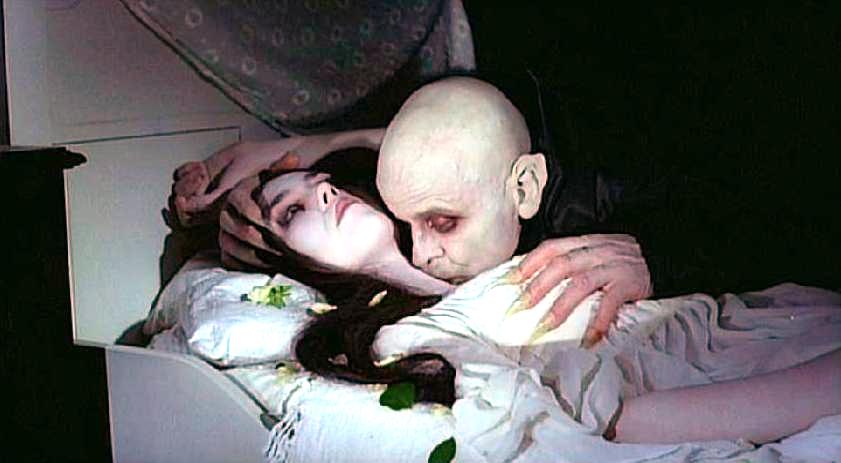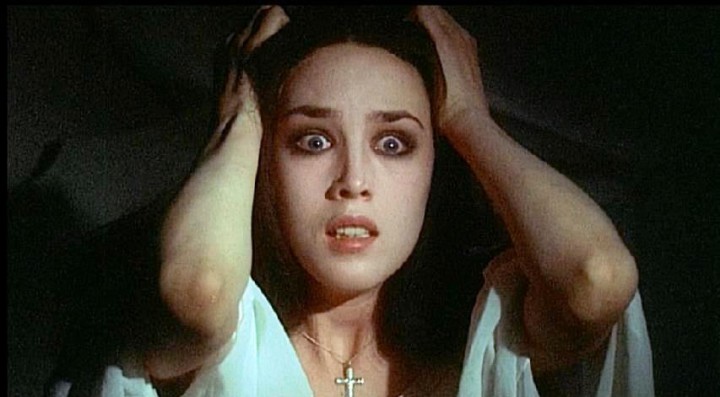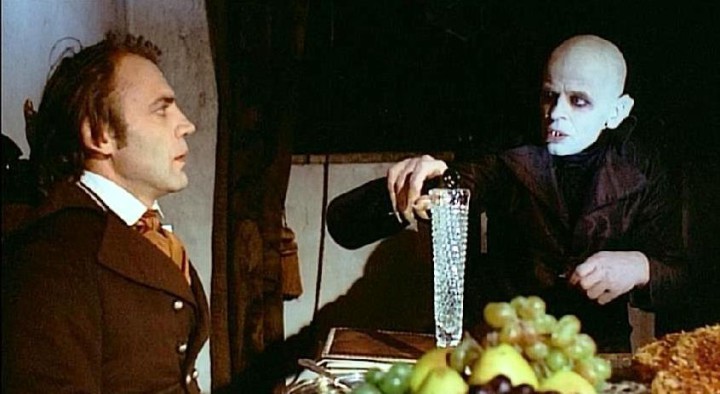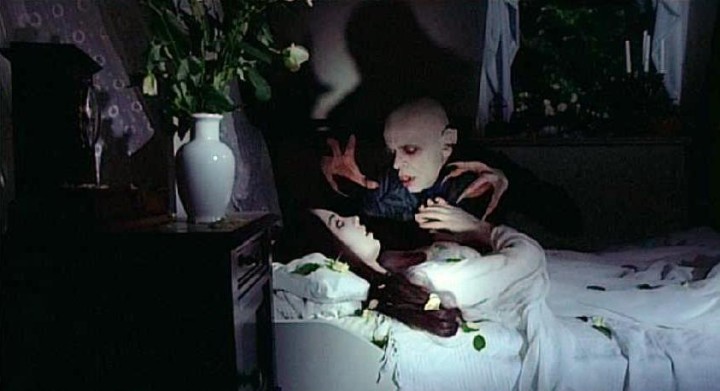F.W. Murnau’s Nosferatu (1922) has been likened — not inaptly — to a chilly blast of doomsday, but that’s a description that could as easily be applied to Werner Herzog’s 1979 remake of that classic of horror cinema. Calling Herzog’s film a remake, while technically correct, does it a grave disservice. Yes, it follows the outline of Murnau’s film with reasonable fidelity, even to the point of duplicating some shots. But the overall sense of Herzog’s version is more a combination of a reimagining and a meditation — or maybe partly an homage. Points that are suggested in Murnau’s film — the equation of the vampire and the plague, the tide of rats that accompany both — are here taken to their logical extensions, creating a work of unusually unsettling power. It’s interesting that while Herzog was able to revert to the names — Dracula, Renfield, Jonathan Harker, etc. — that Murnau changed in an attempt to hoodwink the Bram Stoker estate (it failed), he doesn’t change Murnau’s scenario to reflect the book in any significant way. Apart from changing the ending — to his own ends, not Stoker’s — Herzog’s major addition is to bring in the Host (conserated wafer) as a weapon against vampires. Though this was used in the 1927 play, this may be it’s only appearance in a movie.
Murnau broke free of studio constraints when he made his film, shooting on location and finding the unreal beneath the real in a way that no studio-bound film had done. This too is the approach Herzog takes, but to even greater extremes. His Castle Dracula, for example, is merely a ruined outline against the sky when observed from a distance. That’s the reality. The clean, whitewashed castle that Harker (Bruno Ganz) visits seems completely unconnected to this image, suggesting that perhaps it’s an illusion held together by the strength of Count Dracula’s (Klaus Kinski) will.
Yet that sets up a dichotomy in the film’s portrayal of the Count — one that’s never fully reconciled. This Dracula is a true monster (his implacable force suggested the use of Wagner’s Das Rheingold on the soundtrack), but he seems to have no magic powers. He’s a tired, sick, eternally lonely, strangely sympathetic creature, shut off from a world he wants to be part of. He’s both horrible and heartbreaking. Where Murnau found the unreal beneath the real, Herzog finds the human beneath the horror, and has crafted a film that may be more chilling than its source — even though it never eclipses it (I doubt Herzog wanted to). A true modern classic of horror that should be seen by any fan of the genre — and any fan of cinema, for that matter.
The Thursday Horror Picture Show will screen Nosferatu the Vampyre Thursday, June 5 at 8 p.m. in the Cinema Lounge at The Carolina Asheville and will be hosted by Xpress movie critics Ken Hanke and Justin Souther.







Hmmm. I never thought of Klaus as a vampire, but it makes sense. He’s a good portion on the way naturally. Doesn’t really need to put on much of an act.
Kinda surprised you never saw this. It was a pretty big deal in 1979 — back when “art” titles still played in regular theaters.
My wife remembered seeing it when I mentioned it. I frankly have no memory of it at all which surprises me too.